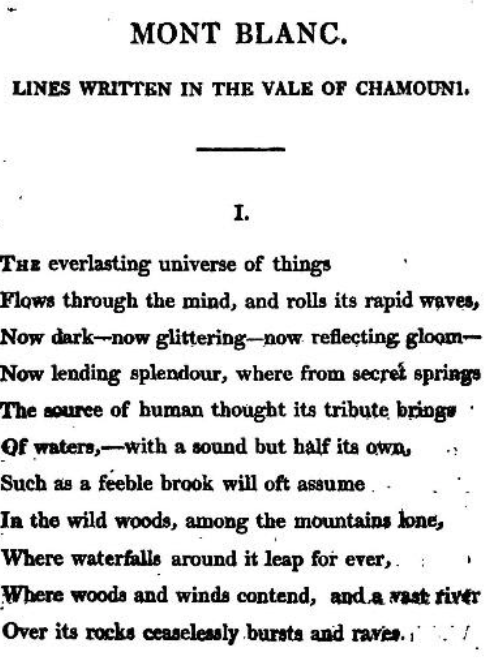Have you ever noticed that every book, essay, or article has a defining vibe? It’s created with the help of literary devices to achieve a unique writing aesthetic. It’s also true that many writers struggle with finding their own aesthetic.
Fortunately, it’s something you can work on and develop over time. To give you a leg up, we’re going to talk about some of the prominent features of a writing aesthetic.
Disclosure: These reviews are reader-supported. We might earn a small commission if you purchase something through our site. Learn more
Make Writing Fun Again
Set and forget your writing conventions by running Grammarly in the background. Save 20% with our exclusive link.
Grammarly Best All-Around
PROS
- 86% out of 86% accuracy
- 16+ billion database
- 150k+ word limit
- 5 devlice limit
- Includes plagiarism
- 1-hour response
CONS
- Only supports English
- Expensive without our link
Grammarly Premium Walkthrough Video
What is a Writing Aesthetic?
Aesthetic in literature is a combination of artistic, cultural references, literary devices, and finding your own voice.
The concept of a writing aesthetic is broad and can be complicated. And even though you can list some of the best-known types of writing aesthetic, there are no limitations to what it can be.
Why Does Writing Aesthetic Matter?
The impact of aesthetic in writing is challenging to measure. The best way to understand its importance is to see it as the subtext of what you’re reading. If a writer has managed to create their own aesthetic, you’ll inevitably sense it, even if you can’t describe it.
There are many reasons why writing aesthetic matters, with one of them being that it’s a way to build up the mystique and allure of a character in a story. If you haven’t used some semblance of aesthetics, your main character isn’t going to stand out, and the rest is going to suffer even more. Understanding the art of crafting compelling narratives can not only enhance your storytelling but also open doors to explore writing as a passive income source, offering opportunities for content creation and monetization.
Examples of Writing Aesthetic
Let’s have a look at some of the well-known examples of writing aesthetics through famous writers’ work in history.
18th Century Aesthetic Movement
You’ve probably heard of the term “Dandy,” which defines a man who places much importance on his physical appearance. The aesthetic movement of the 18th and early 19th century was beautifully captured in the works of Oscar Wilde, and in particular, the novel “The Picture of Dorian Gray.”
As you read his books, you’re able to grasp the eccentricity and the extremes of this movement fully. In this case, even though the idea of aesthetics is the subject, it extends itself in writing. As you can see from the below example, writing aesthetic has a lot to do with finding the right inspiration and having an appreciation for various movements in life.

The Romantics
Symbolism is a very powerful tool for writing aesthetic. It gives writers and poets a chance to convey a certain meaning to readers. Symbolism follows the tone of the writing to create enhanced visual representations in the reader’s mind.
Romanticism is a literary movement that used symbolism a lot. English poets like William Wordsworth, Percy Shelly, and William Blake are some of those associated. Also, American poets like Emily Dickinson used symbolism to represent hope and happiness.
A poet is a great example of a type of writer that incorporates aesthetic principles in order to create a breathtaking literary work.

Shakespeare
Suspense is a writing aesthetic you can find in both fiction and nonfiction. The readers aren’t sure about the outcome, and they want to find out. Properly executed suspense will keep the audience transfixed to the text and tickle their imagination.
Crime stories and mysteries are usually full of suspense. But you can also find anticipation and suspense beautifully portrayed in works of art like Shakespeare’s Macbeth.

Writing Aesthetic Use Cases
What are some of the things that writing aesthetic tools and techniques can achieve? And how does finding the right writing aesthetic help you write better when it comes time to sit down in front of your favorite writing app?
You’ll also see a lot of these same storytelling devices used on a daily basis by some of the best in the business across all the various MasterClass classes.
#1: Rhythm
Some writers achieve rhythm in writing automatically. Others use certain aesthetic techniques. For example, you can alternate the length of sentences. Or move around words and phrases to exploit the flexibility of language.
Another way to create rhythm is to make the most of sentence fragments, with or without regard to the rules of grammar. Rhythm creates a mood and describes people or landscapes more vividly.

#2: Juxtaposition
Do you believe that opposites attract? A juxtaposition in writing is a tool that compares and contrasts. Juxtaposing in writing creates tension and often confusion, the sort that most readers appreciate.
It also helps writers create absurdity and also connections between ideas that are seemingly unrelated. For example, Charles Dickens uses juxtaposing in the opening paragraph of his famous book “A Tale of Two Cities.”

#3: Emotion
Emotion is another aspect of aesthetic writing, and every narrative requires emotional elements in order to captivate the minds of readers.
A good piece of writing is not only about having an idea, but also about using emotion and human sensibility to your advantage. A good piece of science fiction might not have anything to do with real life, but it should still pull at the heart strings of anybody reading it.
#4: Humor
Unless you’re a comedy writer, knowing when to add humor to your writing is a skill. With respect to writing aesthetic, humor often comes at the top of the list.
That’s because even in the gloomiest, bleakest writing, a tasteful and timely jocular reference or scene can give the reader that much-needed reprieve they need.
Humor is tricky, though, and difficult to practice. It’s all about timing and matching it to the rest of your writing aesthetic. Humor is something that you will often see in writing on social media platforms such a Facebook, because it’s a quick and easy way to get people engaged.

How to Improve Your Writing Aesthetic
If you’re a writer, you might already know your writing aesthetic or what you want it to be. But it’s usually something developed over the years. At our content marketing agency, we’ve had TONS of writers’ personal aesthetics evolve over time.
Here are a few ways you can nurture your aesthetic.
Read more
You’re probably already an avid reader, but there’s always more books and articles to read. You might even want to reread books you read a long time ago. But this time, pay attention if a new emotion comes up and how it changes your perspective.
Write often
Simply put, to improve your writing in general, you need to write every day. If you keep putting it off, the right words might never come. And knowing if the words are right is something you’ll never know for sure. Even a few sentences per day will go a long way toward honing your skills.
Don’t overthink it
This means not to obsess over finding your writing aesthetic or your “voice.” If you’re too hung up on that idea, you’ll likely end up confusing the reader.
People are complex, and our minds are not one-dimensional. What if your aesthetic is a feeling that you have yet to tap into?
Writing Aesthetic FAQs
Does editing help with writing aesthetic?
Editing is incredibly important and will help you become a better writer. Scrutinizing your work or having someone else do it will help you to notice parts where your aesthetic is showing. You’ll then be able to work on it further.
Does reading out loud help?
Reading your own words out loud is a nice trick to use. By reading what you wrote or recording yourself, you’ll notice the rhythm, tone, and even the mistakes that you made in trying to achieve a certain aesthetic.
How not to copy other people’s writing aesthetic?
Every writer, famous or otherwise, has their role models and people who have influenced them. Creating completely original content is rare, especially nowadays. Don’t worry too much about that; just pay attention to how people speak, write, and overall express themselves in their everyday lives.
What are the most commonly used literary devices?
We’ve already mentioned the power of symbolism. But a few other literary devices may help you achieve the writing aesthetic you’re searching for. For example, you can use allegory, alliteration, metaphor, or euphemism. Also, tools like hyperbole, irony, personification, and simile often appear in writing.
Creating Your Personal Writing Aesthetic
Developing your personal aesthetic is immensely important to many writers. We all have a personal aesthetic in our lives anyway, on a macro and micro level. It’s something we develop through life.
And we’re all influenced by our background, surrounding, and sensibility we’re born with. For writing purposes, you can create an atmosphere with writing aesthetic tools and your personal feelings.
The trick is always to read and write, and you’ll be able to find the aesthetic you’re looking for over time. And remember, the most accomplished writers are often the toughest critics of their own work.
Aesthetic principles are always important to consider in the writing process, and if you manage to incorporate these principles into your writing, it might just become a true piece of art.
Read how Grammarly can help you with incorporating these principles.



